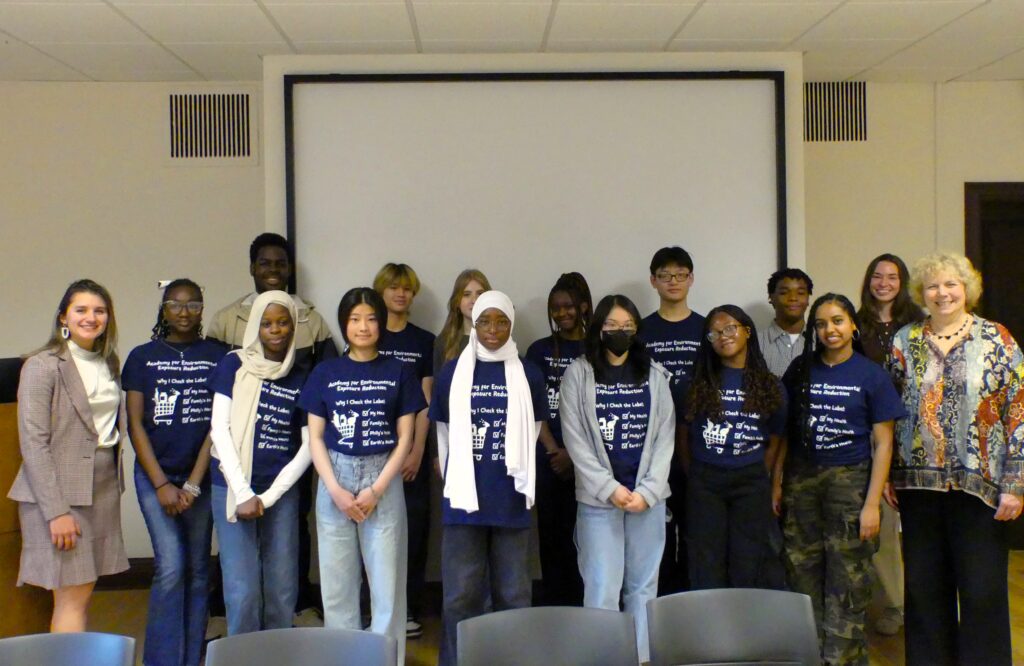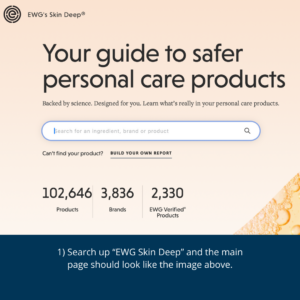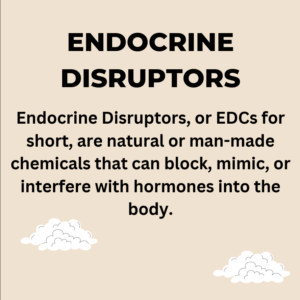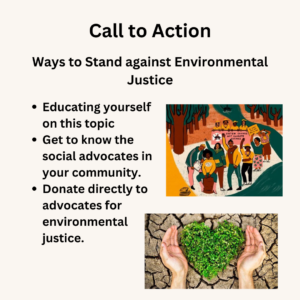It’s 9 a.m. on Saturday, March 2nd, and most high school students are still catching up on sleep. But at this morning hour, thirteen Philadelphia high school sophomores and juniors make their way into a classroom in Blockley Hall on the UPenn’s campus. They write out name tags, fill paper plates with bagels and fruit, and make their way through a few rounds of icebreakers. And before 10 a.m., when many of their classmates are first opening their eyes to the weekend, these thirteen scholars have begun to learn about environmental health.
On this morning, Dr. Marilyn Howarth, Deputy Director of the Philadelphia Regional Center for Children’s Environmental Health (PRCCEH), delivers an overview of endocrine disrupting chemicals (EDCs). She is followed by another researcher, Dr. Lisa Bottalico, who dives further into methods of exposure to EDCs in the environment and how their effects differ when entering the body through different pathways.
This was just the first day of the Academy for Environmental Exposure Reduction.
Lasting eight weeks, the Academy is a PRCCEH program that brings high school students into contact with University of Pennsylvania researchers to study the impacts of EDCs on health and development, exposure routes, and what they can do to minimize exposure. Endocrine disrupting chemicals are any substance that can interfere with the body’s normal production and regulation of hormones. There are many different types of EDCs, leading to growing concern. Research on the effects of EDCs is incomplete, but what we know is that some EDCs can build up in the body over time, some cause harmful effects years after first exposure, and others can affect fetuses in pregnant people.
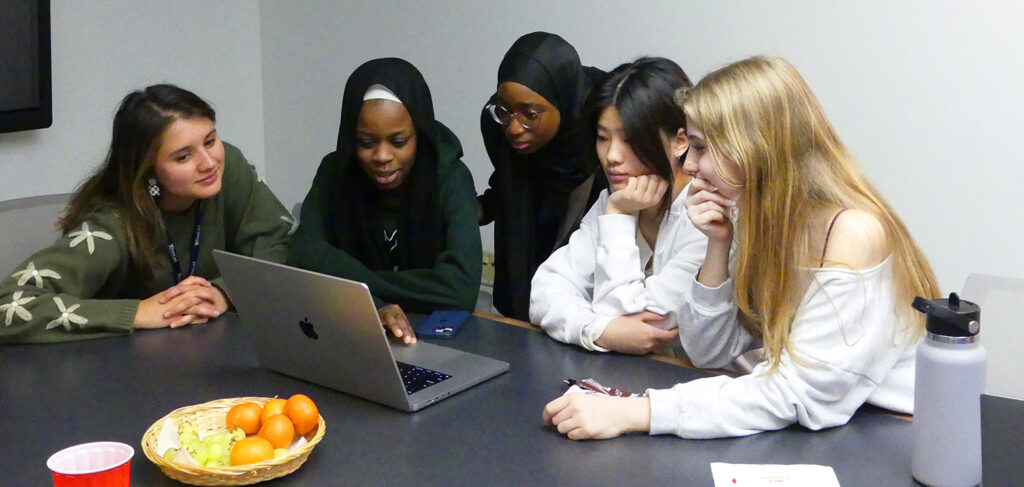
The choice to equip teenagers with this information is an important one. EDCs are often found in the products we use at home. Food items in plastic containers, personal care products like perfumes and face washes, and vapes are just a few of the items that can contain these toxic chemicals.
At this time in their lives, many teenagers have begun to make their own consumer choices, forming preferences and habits that can last for their entire lives. The AEER program gives its students the tools and knowledge to make smart choices with information that can positively affect their health.
Participants learned to read product labels, investigate their choice of personal care products and find safer ones on the Environmental Working Group’s databases. While every Saturday session seemed to bring information on new potential hazards, students remained undeterred and engaged, asking questions about products or exposures they might deal with in their own lives to reduce their risks. One theme that came up multiple times throughout the sessions was the impossibility of fully eliminating all exposure to EDCs and other toxic chemicals in our environment, and that learning to make informed decisions is much more valuable than worrying over every possible danger.
While equipping the AEER students to make these decisions, the other key part of the program was preparing them to share the insights of the program with their families and peers. In addition to lessons and activities on toxins in their environment, the students were introduced to library facilities and camera equipment, and asked to consider not just the content that they were being exposed to, but the way it was communicated. Mentors helped guide groups of students in creating their own communications project, something that they could share with the world and gain the confidence to keep talking about these problems with others.
Examples of their Social Media Posts
One group decided on a social media campaign using a series of posts. Each student had a topic that they were most drawn to. One, recounted stories of how his friends had slowly found themselves spending more and more money on vapes without even realizing it was happening. He wanted to discuss the hidden costs of vaping from his own personal experience. Another student had been interested in learning about environmental cleanup success stories, and so she came up with the idea for a post that explained environmental hazards at the EPA’s Superfund sites. She encouraged the audience to be politically engaged by pushing for continued funding and cleanup.
View the videos on Instagram: https://www.instagram.com/edcwatchgroup/and https://www.instagram.com/aeertalks/
The creativity of the projects was inspiring. One video showed safety tips accompanied by graphics for social media, and another was informal and funny, focusing on interviews with Penn students on the street to learn about their knowledge on the subject.
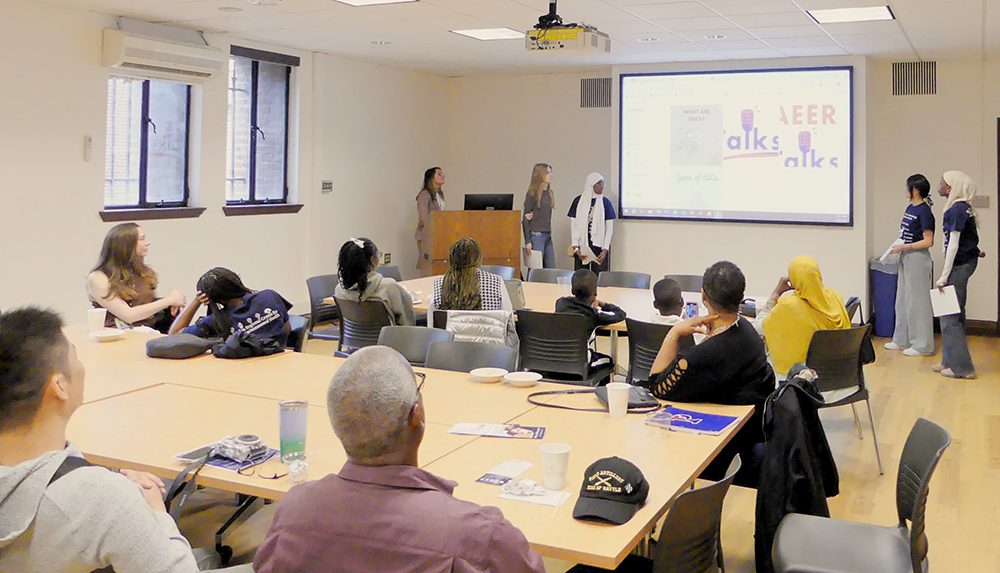
On the final Saturday, students and their families filled a large space in the Penn Museum for the final project presentations. It was exciting to watch the students gain confidence as they all participated in the presentations. Mentors recalled how the students began the program full of questions and now they were asking the audience if they had any questions of their own.
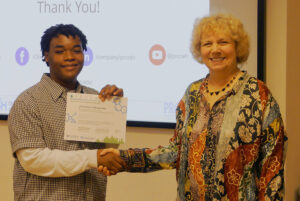
While the AEER program drove home just how many risks are present in our environment from EDCs and other toxic chemicals, the Academy for Environmental Exposure Reduction is a great example of youth empowerment. Over eight weeks, Philadelphia high school students transformed from curious beginners to informed advocates. By equipping them with the knowledge of endocrine disrupting chemicals, and the skills to communicate this information, the program has sown seeds of awareness and action. Watching them take the stage at the Penn Museum, presenting their projects and engaging with the audience, was a profound reminder of the path from awareness to action. As they continue to share their insights with family, friends, and peers, they each carry forward a crucial message: informed decisions and collective action can drive meaningful change.
By Colin Battis,

